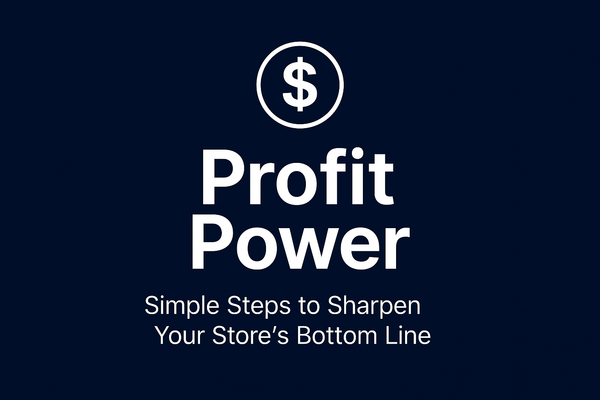Category Scorecards: What to Track and How Often
Category scorecards track health, profitability, and velocity of every store section as an early-warning system for underperformance.

As product assortments expand and shopper behaviors shift faster than ever, convenience store owners who use category scorecards are consistently outperforming peers on margins and inventory turns. Operators who treat every shelf and category like a miniature business can quickly see which areas pay off, which need work, and where opportunities are hiding in plain sight.
But what turns a shelf full of SKUs into a source of insight? It’s a matter of disciplined measurement, not gut feeling. As one leading category manager put it: “Anything that can’t be measured, can’t be improved.” That’s where scorecards come in.
Why Category Scorecards Matter
At the core, a category scorecard is a simple, regularly updated dashboard that tracks the health, profitability, and velocity of every section in your store: snacks, beverages, grocery, tobacco, and more. It’s your early-warning system for category underperformance, dead inventory, or seasonal opportunity—and the starting point for smarter decisions about promotions, shelf resets, and space allocation.
Yet most stores review category numbers only sporadically, missing early trends and reacting only once problems are obvious. This, as Jeff Bezos might say, is “motion” but not “movement”—activity for activity’s sake, like collecting sales data but never acting on it. True “movement” is when owners use category scorecards not just to monitor, but to actively drive changes: dropping slow movers, doubling down on winners, launching timely displays, or repricing before overstock becomes a loss.
What to Track: The Critical Metrics
What goes on the scorecard? While each store’s categories may differ, the industry’s top performers track these metrics for each major group:
- Total Sales and Volume: The basics—dollars and units sold by category and subcategory.
- Gross Margin: Not just revenue but what each section leaves after costs. Margin change often reveals shrink, mispricing, or cost increases.
- Sales per Square Foot: How much money each foot of shelf space actually returns—critical for small stores with every inch at a premium.
- Inventory Turnover: How many times you sell through and restock each category. High turnover = fresh stock and cash flow; low means dead money tied up.
- Profit Contribution: Which categories—and sometimes individual SKUs—drive your overall store profit, not just topline sales.
- Market Share or Share of Wallet: If available, measure against your competitors (scan data, supplier reports) to see if you’re gaining or losing ground.
- Out-of-Stocks and Markdowns: How often core items aren’t available and how often you’ve discounted to clear shelves.
- Seasonal Swings/Trends: Week-to-week or month-to-month change, particularly vital for categories like candy, beverages, or holiday goods.
How Often Should You Look at the Numbers?
- Weekly: Track sales, gross margin, and inventory levels for high-velocity or high-margin categories (snacks, beverages, lottery, prepared foods). Rapid adjustments can then be made on promotions, reorders, or shelf allocation.
- Monthly: Review slower-moving categories, total profitability by section, and make data-driven decisions about planogram changes or pricing.
- Quarterly: Assess big-picture: are your top categories up or down year-over-year? Are new products earning their slot? What do seasonality and competitor activity reveal?
- In Real Time: Use your POS or dashboard for out-of-stock alerts; respond as soon as low or zero stock is detected for key items.
Scorecards are only powerful when they lead to discussion and action—otherwise, data collection becomes mere “motion.”
Turning Scorecards Into Action (and Profit)
The best operators don’t let scorecards gather dust. Here’s how to make them work:
- Integrate With Staff Meetings: Use weekly or monthly scorecards to focus team meetings—celebrate category wins, identify problem areas, and assign specific improvement actions.
- Share With Vendors and Reps: Empower suppliers to see performance data so they can recommend swaps, new products, and promotional support.
- Connect To Promotions & Merchandising: Let scorecard data dictate what gets signage, price breaks, or endcap placement—not just vendor incentives or habit.
- Automate Where Possible: Many POS systems can automate basic reports; customize dashboards to auto-email you critical scorecard metrics.
- Localize and Adapt: Segment by location if you’re multi-store—what works in one store might flop in another. Use scorecards to test and learn, not just copy-paste.
Most importantly: as Jeff Bezos teaches, don’t mistake motion for movement. Reviewing a scorecard each week but never acting is circular “motion.” Taking action on what the numbers show—experimenting with category resets, dropping laggards, and trying new offers—is movement that drives margin and sales upward.
The Competitive Edge of Scorecard Discipline
Owners who run disciplined category scorecard reviews are the ones who consistently find hidden margin, stay lean on inventory, and catch competitive shifts before they become threats. In an industry where cash, shelf space, and time are limited, a well-used scorecard is the X-ray vision that separates thriving independents from those stuck in firefighting mode.
This article is part of the weekly "Shelf Sense" series from C-Store Thrive.
Found this analysis helpful? Share C-Store Thrive with fellow convenience store owners who want to turn shelf data into real decisions—and real profits!
Sources: CSP Daily News, Slimstock, Lark, BandyWorks, Wills Group, Export Solutions, NACS.





